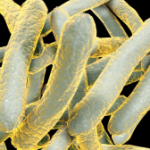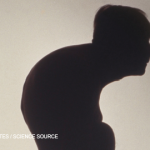
Monkey Business Images/shutterstock.com
A 50-year-old man with history of superficial bladder carcinoma presented to our rheumatology clinic for a three-year history of symmetric polyarthralgias. He had undergone multiple transurethral resection of bladder tumor procedures and bacillus Calmette–Guerin (BCG) treatments.
Prior to receiving BCG, he was fully functional and employed. Days after receiving his second BCG treatment, he developed arthralgias in his fingers, hands, wrists, low back including sacroiliac joints, knees, ankles and feet, which persisted. Of all of the joints involved, his knees affected him the most. The pain was so disabling that he lost his job and a great deal of his functional ability. He also suffered from insomnia secondary to pain. He complained of a dry mouth, but had not had conjunctivitis or uveitis. He himself felt that the arthralgias were related to the BCG treatments due to the temporal relationship of receiving these and the onset of his symptoms. ANA and RF had been checked by his primary care physician previously and were negative.
On physical examination, he had no active joint swelling, but he reported that his fingers and knees would intermittently swell and become acutely painful. He walked with a cane and had difficulty getting to the exam room unassisted. He had no active synovitis, but was tender to palpation of the bilateral MCPs, knees and right metatarsal heads. His right sacroiliac joint was tender to palpation.
Discussion
The spondyloarthropathies, including ankylosing spondylitis, psoriatic arthritis, inflammatory bowel disease-associated arthritis and reactive arthritis, are characterized by an asymmetrical oligoarthritis with non‑articular features, such as dactylitis, uveitis and enthesitis, as well as sacroiliac joint and lumbar spine involvement. Reactive arthritis typically occurs after a genitourinary or gastrointestinal infection, most commonly with Chlamydia trachomatis. The typical clinical picture is an asymmetric oligoarthritis with associated conjunctivitis, urethritis and arthritis.
Reactive arthritis can be difficult to distinguish from seronegative rheumatoid arthritis, but the former tends to have a predilection for joints below the waist, typically affecting knees and ankles asymmetrically; however, 50% of patients can have upper joint involvement as well. The presence of lower back pain that is worse at night with radiation to the buttocks is present in about 30% of patients with reactive arthritis. Seronegative rheumatoid arthritis typically presents with a symmetrical polyarticular involvement and has a predilection for the cervical spine rather than the lower back region.1
Reactive arthritis secondary to intravesical BCG is a rare, but well-recognized, condition. A systematic review by Bernini et al from October 2013 found 73 papers and 112 total patients with this condition reported in the literature worldwide. They looked at 61 of these papers and 89 of these patients, of which 73 were male and 16 female. Fifty-five percent (55.1%) of these patients had polyarthritis, and of these, 51% were symmetric; 37% had oligoarthritis, and of these, 33.3% were symmetric; 7.9% had monoarthritis; 59.6% of the total patients had an asymmetric distribution of their arthritis. The knee and ankle were the most frequently involved joints, and 42.6% were HLA-B27 positive. Over 70% (70.5%) of the patients recovered from their arthralgias within two months, and 93.2% recovered within six months. The development of a chronic form (lasting more than six months) of the arthritis was rare, occurring in 6.8% of the patients.2


